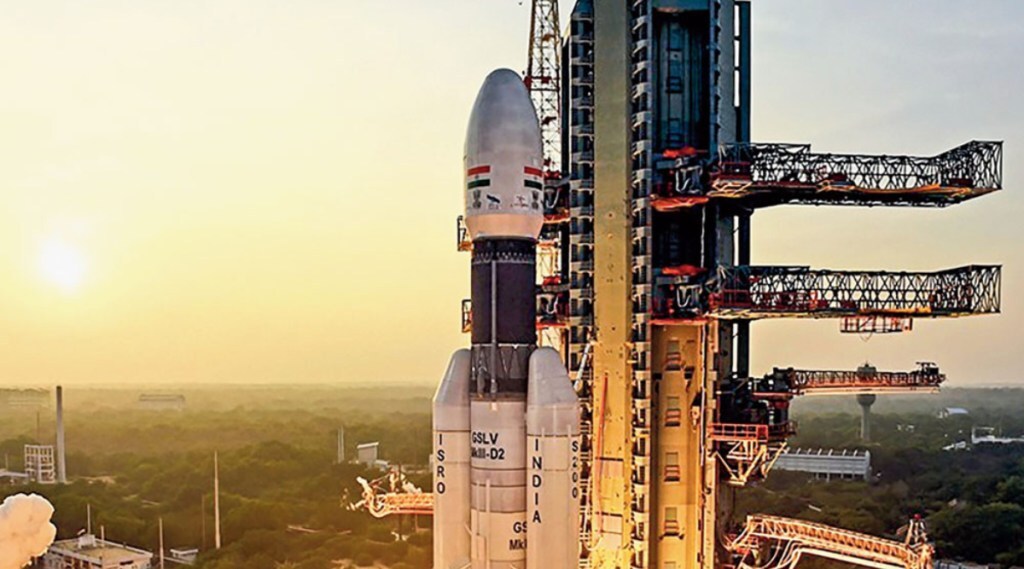The trusted workhorse of the Indian Space Organisation (ISRO), the Polar Satellite Launch Vehicle (PSLV), may soon be replaced by the Next Generation Launch Vehicle (NGLV). At the Engineers Conclave 2022, ISRO Chairman S Somnath shared ISRO’s ongoing development on a three-stage, reusable heavy-lift vehicle with a payload capability of ten tonnes, nearly five times the payload capacity of the PSLV. The 3-day Engineers Conclave is going on at the space agency’s liquid propulsion systems centre (LPSC) in Thiruvananthapuram.
The Big Boost: Semi-Cryogenic Propulsion
The NGLV will be ISRO’s foray into reusable launch vehicles that American private space company, SpaceX, boasts of. Further, it will also incorporate semi-cryogenic propulsion. Cryogenic propulsion is centered on using cryogenic propellants stored at frigid temperatures. Cryogenic fuel has a greater mass flow rate than traditional fuels and produces more thrust and power. The fuel’s low-temperature liquid state is also environmentally cleaner than conventional fuels.
Also Read: Eye in the Sky: ISRO and NASA Develop World’s First Dual Frequency Radar — NISAR
The semi-cryogenic stage envisioned for the NGLV consists of refined kerosene as fuel with liquid oxygen (LOX) as an oxidiser. Given the low atmospheric density in space, launch vehicles carry an oxidiser for ignition purposes.
ISRO’s Geosynchronous Satellite Launch Vehicle (GSLV) already uses a cryogenic engine and can propel a payload of up to four tonnes. For heavier loads, for which the NGLV is proposed, semi-cryogenic engines will be vital.
“In cryogenic engines, the fuel used is liquid hydrogen, which poses difficulties in storage as the temperature for liquid hydrogen for use in a cryogenic engine is -253 degrees Celsius. In a semi-cryogenic engine, civil aviation fuel like refined kerosene replaces liquid hydrogen. The technical challenges with liquid hydrogen also put a prohibitive cost which a semi-cryogenic engine also amply addresses,” explains Girish Linganna, Aerospace & Defence Analyst.
The True Next Gen: Cutting Edge Technologies of the NGLV
The NGLV will be a great leap over the existing launch vehicles for the ISRO. ISRO states that a Geosynchronous Transfer Orbit (GTO) satellite will require at least ten tonnes. The NGLV will offer double that capacity if the payload is for Low Earth Orbit (LEO).
Interestingly, the NGLV will also be a reusable launch vehicle. However, the reusable variant of the NGLV will feature a tradeoff in terms of a lower payload capacity. “Reusable launch vehicles have been pioneered by SpaceX, which has been routinely launching its Falcon 9 rocket. The Falcon 9 is similarly specced to the NGLV, with an eight-tonne capacity for the GTO and a twenty-two-tonne capacity for LEO. Like the NGLV, Merlin, the Falcon 9 engine, uses LOX and rocket-grade kerosene,” Girish Linganna adds.
Also Read: ISRO is one of the best space agency in efficient use of funding for satellite launches, say Space experts from LAC region
The Falcon 9 is a trailblazer in reusable launch vehicles. Although only partly reusable, its upper stages are discarded, and the Big Falcon Rocket (BFR) is aimed at 100 per cent reusability. The team at SpaceX has also miraculously brought the turnaround time for reusing an engine from the Falcon 9 to mere nine days.
The reusability of launch vehicles is crucial to bring about more equitable and accessible space exploration. While the ISRO has been a favoured partner given its low-cost yet high-reliability launches, the overall launches remain expensive.
While the global average for a 150 KG satellite has been INR 700 crore, ISRO’s PSLV has brought that down to INR 200 crore. ISRO’s SSLV will slash it down to a comparatively measly INR 30 crore. However, ISRO’s bigger ambitions include a space station, the Aditya mission, etc., which require a heavy-lift vehicle like the NGLV.
ISRO Chairman also underlined the importance of a business model around the NGLV. This includes launching commercial satellites as well as ensuring industry participation. NGLV and ISRO will be placed as the giants on whose shoulders the industry can stand.


